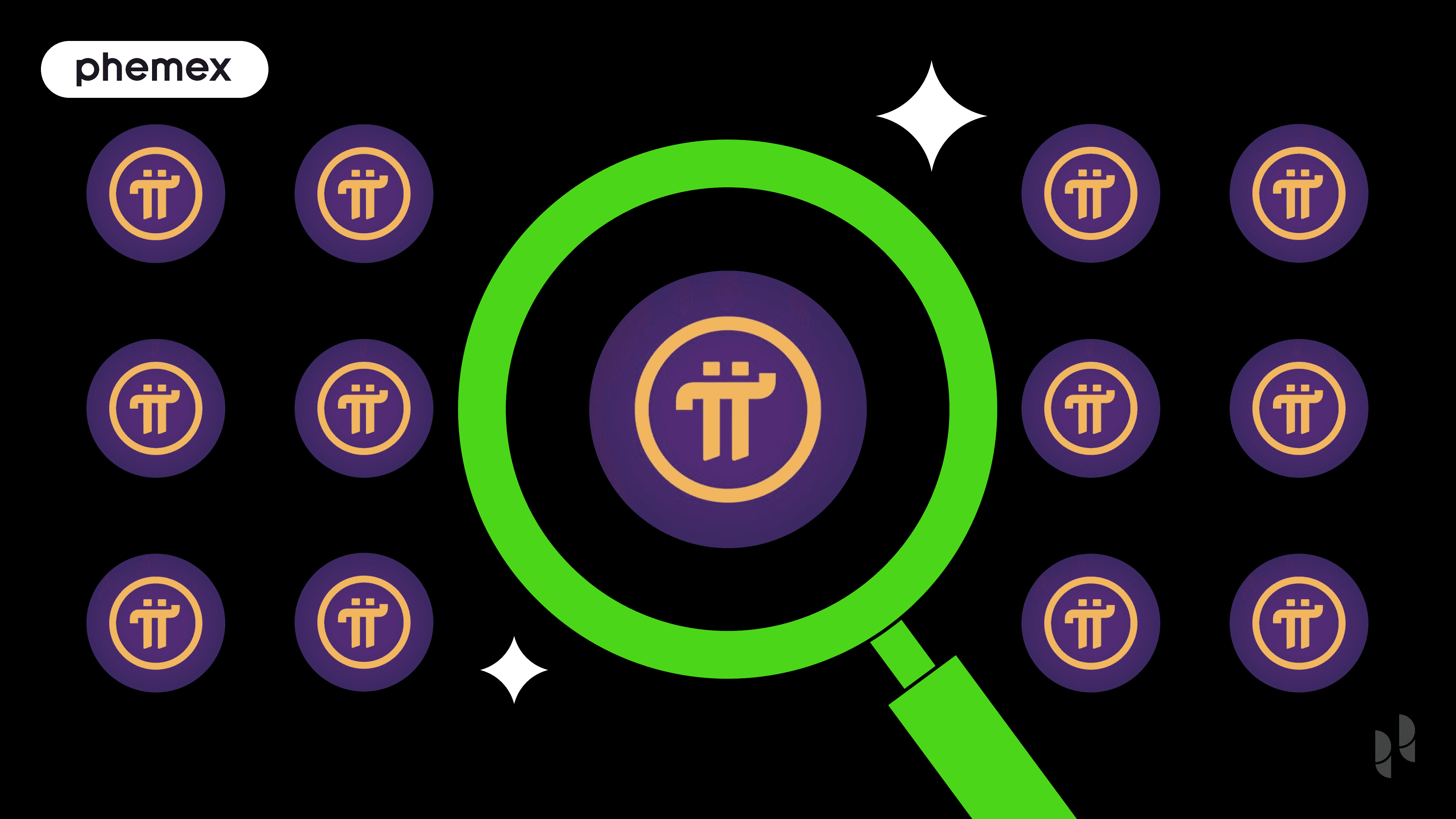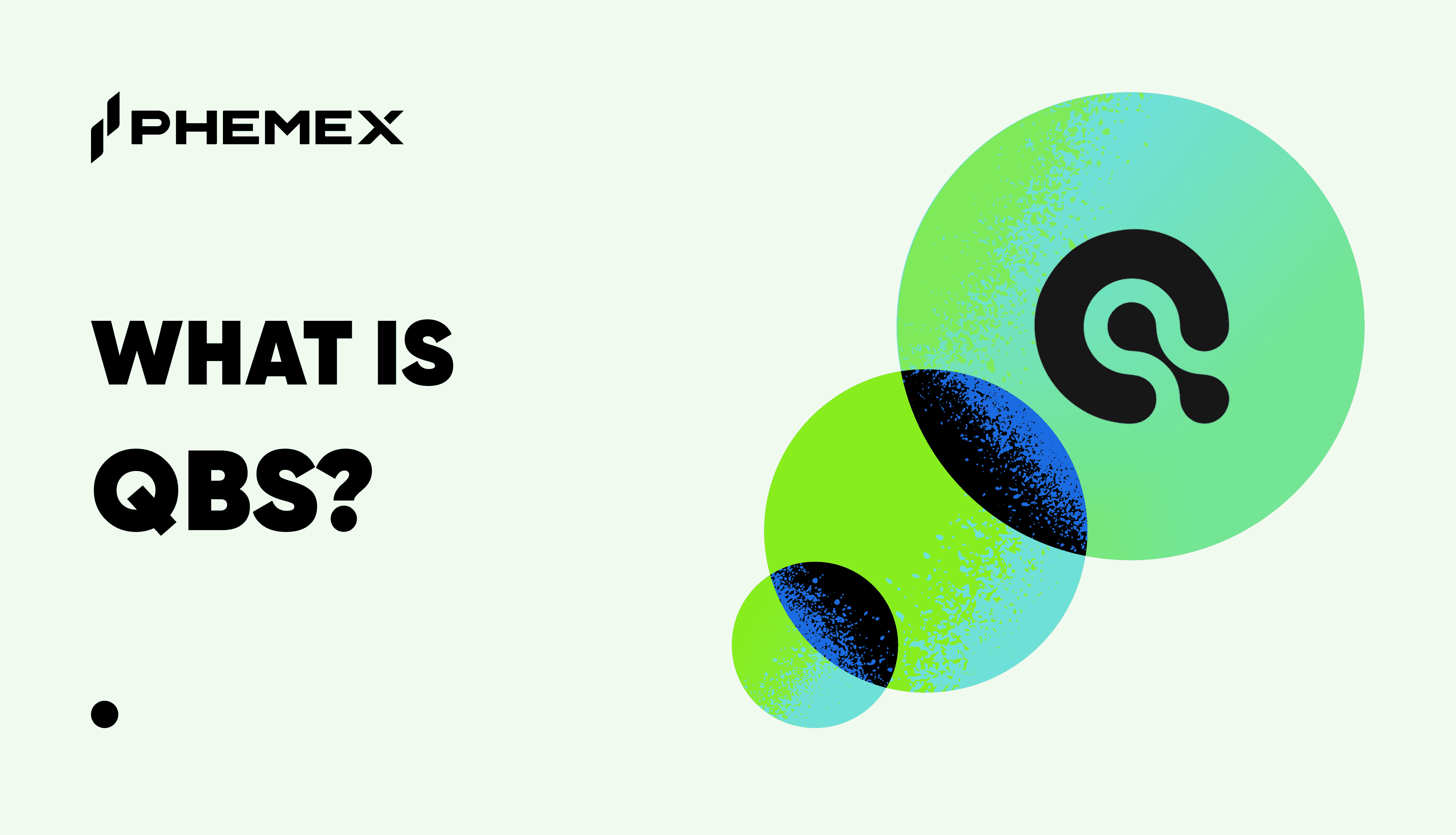Summary Box (Quick Facts)
-
Ticker Symbol: PI
-
Chain: Pi Mainnet
-
Contract Address: Not applicable (native blockchain token)
-
Circulating Supply: 7,990,739,515
-
Max Supply: 100,000,000,000
-
Primary Use Case: Peer-to-peer transactions and dApp ecosystem
-
Current Market Cap: $2,751,499,451
-
Availability on Phemex: No (as of writing)
What Is Pi Network?
Pi Network is a novel cryptocurrency project designed to make crypto mining accessible to everyone directly from their mobile phones. Launched in 2019 by a team of Stanford graduates, the project aims to solve two major barriers to cryptocurrency adoption: accessibility and energy consumption.
So, what is Pi Network exactly? It's a digital currency project that allows users to "mine" its native coin, PI, without needing expensive hardware or draining their phone's battery. Pi Network explained simply, it uses a unique consensus mechanism that rewards users for their daily engagement and contributions to securing the network. The ultimate goal is to build a widely distributed and user-friendly peer-to-peer ecosystem powered by the PI cryptocurrency. To learn more about emerging crypto projects, explore the Phemex Academy.
How Many PI Coins Are There?
Pi Network's tokenomics are structured to support a large, decentralized community and long-term ecosystem growth.
-
Max vs. Circulating Supply: The total maximum supply of PI is capped at 100 billion tokens. However, the circulating supply is not fixed. It gradually increases as more users (called "Pioneers") pass the identity verification process (KYC) and migrate their mined PI from the mobile app to the mainnet blockchain.
-
Inflationary or Deflationary?: The mining mechanism is designed to be deflationary over time. The base mining rate halves at key network milestones (e.g., reaching 100,000, 1 million, 10 million users, etc.), making new PI harder to earn as the network grows. This creates scarcity. Additionally, users can voluntarily lock up a portion of their PI for a set duration to boost their individual mining rate, which temporarily removes those coins from the circulating supply.
What Does PI Do?
The primary Pi Network use case is to function as a medium of exchange within a comprehensive ecosystem of applications and services. The project’s vision is to create a utility-driven currency for everyday transactions.
-
Real-World and Network Use Cases: The core function of PI is to facilitate peer-to-peer transactions. Users can send and receive PI for goods and services through the Pi Wallet. The project is actively fostering a marketplace where businesses can integrate PI payments.
-
Utility in Apps and Platforms: The Pi Browser serves as a gateway to a growing ecosystem of decentralized applications (dApps). Developers can build apps on the Pi platform where PI is used for in-app purchases, content access, and other functions, creating a circular economy.
-
Future Utility: As the network matures, potential use cases could expand to include decentralized finance (DeFi) services like staking and lending, further increasing the coin's utility.
PI vs. Bitcoin
While both are digital currencies, PI and Bitcoin differ significantly in their technology, purpose, and approach to decentralization.
| Feature | Pi Network (PI) | Bitcoin (BTC) |
| Technology | Uses the Stellar Consensus Protocol (SCP), an energy-efficient method based on a web of trust. | Uses Proof-of-Work (PoW), a highly secure but energy-intensive mining process. |
| Speed and Fees | Designed for fast transactions with low fees, suitable for everyday micro-transactions. | Transaction times can vary, and fees can become high during periods of network congestion. |
| Use Case | Aims to be a medium of exchange for a dApp ecosystem and daily commerce. | Primarily viewed as a store of value or "digital gold," with transactions as a secondary function. |
| Decentralization | Achieves decentralization through a large, distributed network of mobile users and computer nodes. | Highly decentralized with a global network of miners and nodes securing the blockchain. |
The Technology Behind PI
Pi Network's technical foundation is built on accessibility, efficiency, and security.
-
Consensus Mechanism: Instead of Proof-of-Work, Pi uses the Stellar Consensus Protocol (SCP). This algorithm allows nodes to reach consensus quickly and efficiently without high energy costs. It relies on a system of "Security Circles," where users vouch for the trustworthiness of others in their network to create a global trust graph that secures the ledger.
-
Unique Technologies: The project's standout feature is its "mobile mining" capability. This isn't true mining in the traditional sense but rather a mechanism for distributing PI coins to users who prove their daily engagement, thereby contributing to the network's security graph.
-
Infrastructure and Partnerships: The Pi ecosystem consists of the main Pi app (for mining), the Pi Wallet (for holding PI), and the Pi Browser (the portal to Web3 dApps). The project encourages developers to build on its platform through hackathons and community initiatives to expand its utility.
Stay informed about the latest developments and News about PI to understand how its technology is evolving.
Team & Origins
Pi Network was founded in 2019 by a team of Stanford University PhDs who aimed to bring the power of cryptocurrency to the masses. The core founders are:
-
Dr. Nicolas Kokkalis: Head of Technology. He holds a PhD from Stanford and is an expert in distributed systems and human-computer interaction.
-
Dr. Chengdiao Fan: Head of Product. She has a PhD in Computational Anthropology from Stanford, specializing in social computing and unlocking human potential on a global scale.
The project was launched on Pi Day (March 14), 2019, and has since grown into one of the largest cryptocurrency communities in the world, driven by its vision of an inclusive digital economy.
Key News & Events
Pi Network is currently in its "Enclosed Mainnet" phase, a period of active development and ecosystem building before its full launch.
-
Ongoing KYC and Migration: The primary focus for the community is completing the Know Your Customer (KYC) process, which is a prerequisite for migrating mined PI to the mainnet blockchain. The Core Team provides regular updates on the number of users who have successfully migrated.
-
Ecosystem Development: The team is heavily focused on fostering utility through the Pi Browser. Hackathons and developer programs encourage the creation of dApps for gaming, finance, social media, and more, which will accept PI for payments.
-
Open Mainnet Conditions: The Core Team has outlined several conditions that must be met before transitioning to the "Open Mainnet" phase, which would allow connectivity to other blockchains and exchanges. These conditions include reaching a critical mass of KYC'd users and a mature, utility-rich ecosystem.
The community is eagerly watching for any news that might affect the future PI price upon its public launch.
Is PI a Good Investment?
Evaluating whether PI is a good investment is complex, especially since it is not yet publicly traded. Its potential value is speculative and depends entirely on the project's future success.
Disclaimer: This section is for informational purposes and is not financial advice. Cryptocurrency trading involves significant risks; only invest what you can afford to lose.
Potential Strengths:
-
Massive Community: With tens of millions of engaged users, Pi Network has an enormous potential user base that could drive rapid adoption and network effects once the mainnet is fully open.
-
Strong Vision and Utility Focus: The project’s emphasis on creating real-world utility through dApps and commerce differentiates it from many purely speculative cryptocurrencies.
-
Accessibility: By removing the technical and financial barriers to entry, Pi has introduced cryptocurrency to a vast, untapped global audience.
Risks to Consider:
-
Pre-Launch Status: The primary risk is that PI currently has no official monetary value. Its future value is not guaranteed and depends on a successful Open Mainnet launch.
-
Execution Risk: The success of Pi Network hinges on the Core Team's ability to transition from an enclosed network to a fully functional, open, and secure blockchain ecosystem.
-
Regulatory Uncertainty: The regulatory landscape for cryptocurrencies is constantly evolving and could present challenges for Pi Network's global operations in the future.
Ultimately, the Pi Network investment potential is tied to its long-term vision. It represents a high-risk, potentially high-reward scenario dependent on a successful public launch and the creation of a vibrant economy.
FAQs
What is Pi Network in simple terms?
Pi Network is a free, energy-light mobile app that lets you earn a new cryptocurrency, PI, by making simple contributions to its community. It aims to be a widely used digital currency for everyday people.
How do you get PI coins?
You can earn PI by downloading the official Pi Network mobile app, joining with an invitation code, and then tapping a button once every 24 hours to prove you are an active member of the network.
Is PI worth any money right now?
Currently, PI is not officially traded on any cryptocurrency exchange and therefore does not have an established price. The value of PI will be determined by the market once the project transitions to its Open Mainnet phase and becomes publicly tradable.
When will I be able to trade PI on Phemex?
The ability to Trade PI on exchanges like Phemex depends on the Pi Core Team launching the Open Mainnet, which will allow for external blockchain connectivity. There is currently no official launch date, as the team is focused on meeting its ecosystem and KYC goals first.









